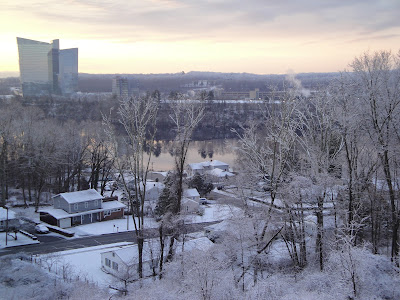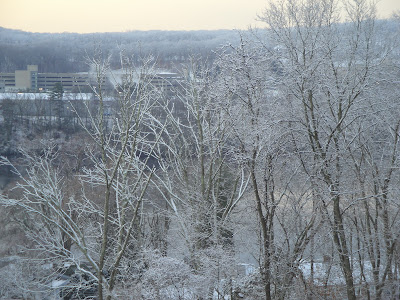 |
| Sunrise December 1st, 2019 |
Overall, it was a pretty warm and uneventful winter. Fortunately, that meant we were able to get outside on a regular basis. Now, with Covid-19 physical distancing, I'm looking back on winter with fondness for all the get-togethers with friends. Today, at the end of March, I can see forsythia in bloom, a few trees in bud and even a few flowering shrubs in the neighborhood below me. So, it is time to move forward and say a final good-bye to Winter.
 |
| We can see ice on the shore line across the cove |
 |
| A clear view of the farm's fence has opened up near our border |
 |
| December 3, 2019 - Our first snow of the season and I had to include my Christmas tree because I'm just so excited about how well it fits on that little section of wall! |
 |
| The bistro snow cake! |
 |
| No sunrise today |
 |
| View of Trading Cove and the Mohegan Sun |
 |
| The plow truck taking care of the parking lot |
 |
| View from third floor common area - can see Thames River a little better here |
 |
| View towards Thames River from the 6th floor common area - an even better view of the Thames River |
 |
| View of Trading Cove from the 6th floor common area |
 |
| View from north side windows |
 |
| Snow starting to let up |
Good-bye Winter of 2019-2020!
See books by Laura S. Pringle on Amazon
The Pringle Plan is a series of educational guides.
©2020 Laura S. Pringle. All Rights Reserved.

















































